Abduction Pillow Brace: Optimal Shoulder Support & Recovery
Understanding the Humeral Abduction Orthosis: A Core Component in Shoulder Recovery
The Humeral Abduction Orthosis, commonly referred to as an abduction pillow brace, represents a critical advancement in post-operative and post-injury shoulder care. Designed to provide precise immobilization and support, this specialized medical device is instrumental in facilitating optimal healing of the glenohumeral joint and surrounding soft tissues. Its primary function is to maintain the humerus (upper arm bone) in a specific abducted position, typically between 15 to 45 degrees, which offloads stress from delicate structures such as the rotator cuff, labrum, and capsular ligaments. This controlled positioning is vital for reducing pain, preventing re-injury, and optimizing the environment for tissue repair, especially following complex procedures like rotator cuff repair, shoulder arthroscopy, or management of dislocations. The unique design, incorporating a supportive pillow, ensures that the arm is held away from the body, preventing internal rotation and adduction that could compromise surgical outcomes or impede natural healing processes. This specific design minimizes tension on healing tendons and ligaments, allowing for a more stable and accelerated recovery pathway. The efficacy of a well-engineered shoulder abduction brace with pillow lies in its ability to offer consistent, reliable support while prioritizing patient comfort and compliance throughout the rehabilitation journey.
Beyond its role in immediate post-surgical immobilization, the use of a shoulder abduction sling with pillow extends to conservative management of certain shoulder conditions, reducing inflammation, and preventing further damage in cases where surgery is not immediately indicated. The advanced engineering behind products like the Humeral Abdution Othosis ensures that it is not merely a static support but an integral part of a dynamic recovery strategy. Material science plays a pivotal role in its construction, utilizing lightweight yet durable components that can withstand prolonged use while maintaining structural integrity. Key features often include adjustable straps for a customized fit, breathable fabrics to mitigate skin irritation and heat buildup, and a robust pillow component that maintains the desired abduction angle. The careful calibration of these elements distinguishes high-quality abduction braces, directly influencing patient comfort, adherence to treatment protocols, and ultimately, the success of the recovery process. This comprehensive approach to design and functionality positions these orthoses as indispensable tools in modern orthopedic and sports medicine practices, catering to a diverse patient population ranging from elite athletes to individuals recovering from everyday injuries.
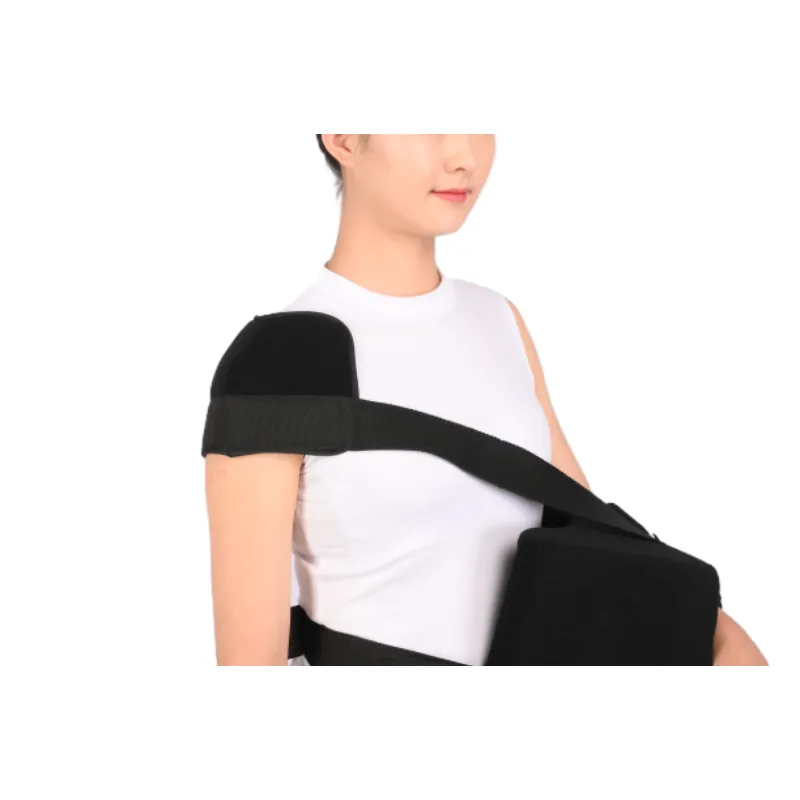
Technical Specifications and Performance Parameters
The design and manufacturing of a high-performance abduction pillow brace are dictated by stringent technical specifications to ensure both clinical efficacy and patient comfort. Parameters such as the abduction angle, often adjustable from 10° to 45° or even 60°, are crucial for accommodating various surgical protocols and individual patient anatomies. The construction materials are meticulously selected for durability, breathability, and hypoallergenic properties. Components typically include high-density foam for the abduction pillow, which provides consistent support and pressure distribution, reducing the risk of nerve impingement or skin breakdown. The sling and straps are often made from advanced composites of nylon, polyester, and breathable mesh, offering strong support while facilitating airflow to prevent perspiration and discomfort. Hook-and-loop closures (e.g., Velcro) and quick-release buckles are standard for easy application, adjustment, and removal, enhancing patient independence and compliance. A lightweight yet robust frame, often internal to the pillow or integrated into the arm support, provides structural integrity without adding unnecessary bulk. These elements converge to create a shoulder immobilizer with pillow that meets the rigorous demands of medical rehabilitation.
Beyond material composition, critical performance parameters include the brace's weight, which impacts patient mobility and long-term wearability, typically ranging from 0.5 kg to 1.5 kg. Load-bearing capacity is also vital, ensuring the brace can safely support the arm's weight and withstand incidental forces without compromising its integrity or therapeutic position. Adjustability is a cornerstone of effective shoulder sling support, with features allowing for precise fitting around the torso, bicep, and forearm, ensuring uniform compression and support. The adjustability range for arm length and chest circumference typically covers a broad spectrum, catering to diverse patient sizes, from pediatric to bariatric. Longevity and hygiene are also key considerations; high-quality braces are designed for easy cleaning and sterilization, supporting extended use over weeks or months, as required for full recovery. The table below outlines typical specifications for a premium abduction pillow brace, highlighting the precision and engineering required for optimal patient outcomes.
| Parameter | Description / Range | Standard Value (Approx.) |
|---|---|---|
| Abduction Angle | Adjustable range of humerus angle relative to torso | 15° - 45° (adjustable) |
| Pillow Material | Core material for abduction support | High-density foam with breathable cover |
| Strap Material | Fabric composition of straps and sling | Nylon, Polyester, Mesh composite |
| Weight (Total) | Overall weight of the assembled brace | 0.8 - 1.2 kg (varies by size) |
| Closure Type | Mechanism for securing the brace | Hook-and-loop fasteners, Quick-release buckles |
| Sizing | Available sizes based on patient dimensions | S, M, L, XL (adjustable via straps) |
| Cleaning Method | Recommended cleaning procedure | Hand wash with mild soap, air dry |
Precision Manufacturing and Stringent Quality Assurance
The manufacturing process for a high-quality abduction pillow brace, such as the Humeral Abdution Othosis, is a meticulous multi-stage procedure designed to ensure consistent product performance, patient safety, and durability. It begins with the selection of premium-grade raw materials: medical-grade foams and plastics (e.g., polyethylene, polypropylene) for the abduction pillow and arm support components, and advanced textile blends (e.g., breathable nylon-polyester meshes) for the sling, straps, and padding. These materials are chosen not only for their mechanical properties but also for their biocompatibility, ensuring they are non-irritating and safe for prolonged skin contact. The manufacturing process involves precision cutting and shaping of foam and fabric components using automated machinery to ensure exact dimensions and ergonomic contours. Plastic elements, which provide structural rigidity and adjustable features, are often produced via injection molding or thermoforming, allowing for complex geometries that optimize fit and function. Unlike heavy industrial products, there's no casting or forging; instead, the emphasis is on lightweight, high-strength polymers and textiles.
Assembly of the shoulder abduction brace with pillow involves skilled craftsmanship, combining stitching for textile components, ultrasonic welding or adhesive bonding for certain plastic-to-fabric interfaces, and mechanical fastening for adjustable buckles and hook-and-loop systems. Each stage is subject to rigorous in-process quality control checks, including dimensional accuracy, seam integrity, and fastener strength. Post-assembly, every unit undergoes comprehensive final inspection and functional testing to verify proper operation of all adjustable mechanisms, comfort, and overall structural integrity. Adherence to international standards is paramount; our manufacturing facilities operate under strict ISO 13485:2016 (Medical Devices Quality Management Systems) certification, which dictates a robust quality management system covering design, production, and after-sales support. Furthermore, products are designed to meet regulatory requirements such as FDA (U.S. Food and Drug Administration) clearances and CE Marking (Conformité Européenne) for market access in Europe, signifying compliance with health, safety, and environmental protection standards. The expected service life of these orthoses typically ranges from several weeks to several months, correlating directly with the patient's recovery timeline, but designed for durability under constant daily use.
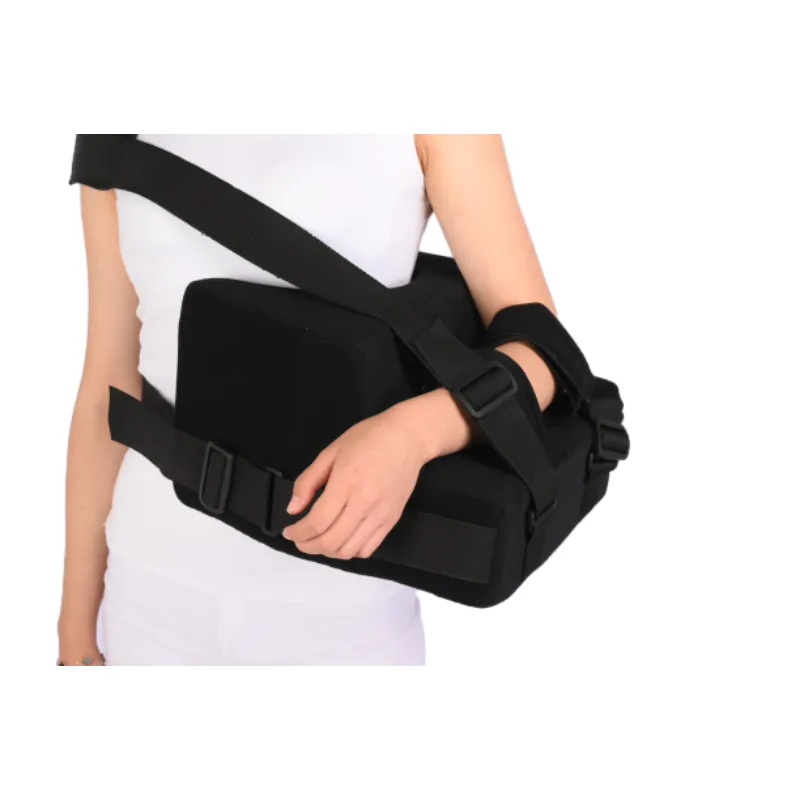
Technological Advantages and Patient-Centric Benefits
The technological advantages embedded within a modern abduction pillow brace extend far beyond simple immobilization, translating directly into tangible benefits for patient recovery and overall experience. One primary advantage is the precise control over the abduction angle, which can be critical for specific post-surgical protocols, such as those following massive rotator cuff repairs or capsular shifts. This adjustability ensures optimal anatomical positioning, facilitating tension-free healing of compromised tissues. Unlike generic slings, a dedicated shoulder abduction sling with pillow minimizes unwanted internal rotation and adduction, which can jeopardize the integrity of surgical repairs. The advanced materials used in the Humeral Abdution Othosis, including open-cell foam and breathable fabrics, provide superior moisture wicking and airflow, significantly reducing the risk of skin maceration, heat rash, and general discomfort, which are common complaints with older, less sophisticated designs. This enhanced comfort directly correlates with improved patient compliance, ensuring the brace is worn as prescribed for the necessary duration, a critical factor for successful outcomes.
Furthermore, the ergonomic design of a premium shoulder immobilizer with pillow contributes to reduced pressure points and improved weight distribution, preventing nerve compression or localized discomfort often associated with prolonged wear. Features like padded neck straps and adjustable torso bands distribute the weight of the arm and brace across a larger surface area, mitigating strain on the neck and contralateral shoulder. The modular nature of many contemporary designs allows for ambidextrous use or specific adjustments for left or right arm application, simplifying inventory management for healthcare providers and offering greater flexibility. The integration of quick-release buckles and easily adjustable straps empowers patients to don and doff the brace with minimal assistance, promoting early independence in activities of daily living (ADLs), where appropriate. These technological refinements in arm shoulder sling support are not merely incremental improvements; they represent a holistic approach to patient care, accelerating healing times, mitigating complications, and significantly enhancing the patient's journey from injury or surgery to full functional recovery. The focus is on providing optimal biomechanical support while maximizing patient comfort and adherence to prescribed treatment.
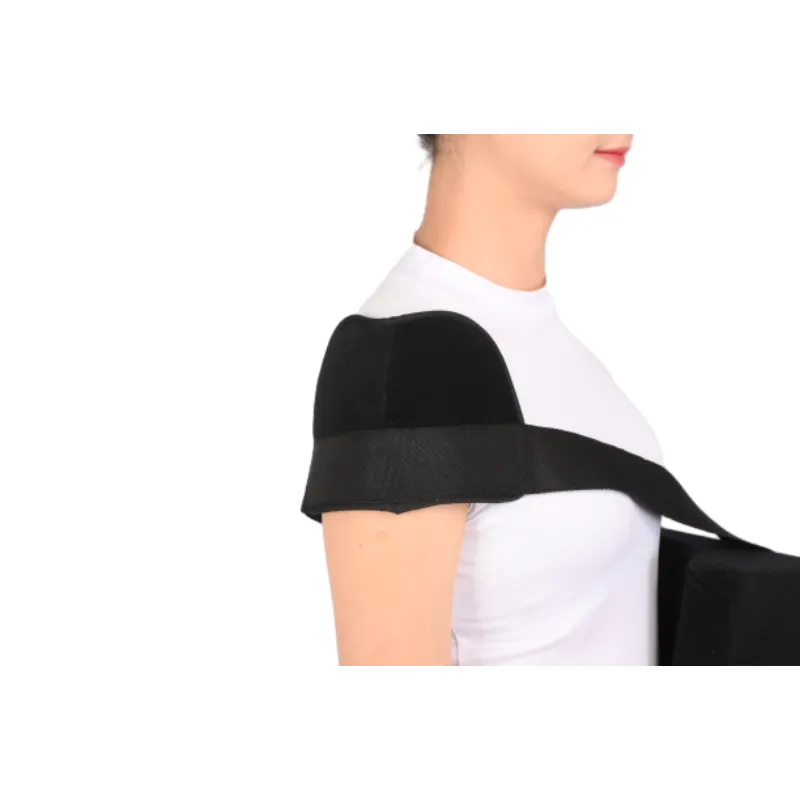
Application Scenarios and Illustrative Case Studies
The versatility of an abduction pillow brace like the Humeral Abdution Othosis makes it an indispensable tool across a wide spectrum of orthopedic and sports medicine applications. Its primary utility lies in post-operative immobilization following procedures such as rotator cuff repair, where maintaining the arm in slight abduction reduces tension on the healing tendons, promoting optimal reattachment and preventing re-tear. Similarly, it is crucial after shoulder arthroplasty (shoulder replacement surgery) to protect the newly implanted joint and surrounding tissues during the initial healing phase. Patients recovering from shoulder instability surgeries, including Bankart or Latarjet procedures, also benefit significantly from the controlled external rotation and abduction provided by this brace, which prevents positions that could lead to recurrent dislocation. Beyond surgical interventions, a shoulder abduction brace with pillow is frequently prescribed for the conservative management of conditions like adhesive capsulitis (frozen shoulder) in its acute painful stage, severe shoulder sprains, or non-displaced fractures of the humeral head or greater tuberosity, where gentle immobilization can aid pain relief and prevent further injury. Its ability to support the arm's weight and maintain a neutral position offloads stress from injured structures, offering a stable environment for healing.
Case Study 1: Rotator Cuff Repair Rehabilitation. A 55-year-old male underwent arthroscopic repair of a large rotator cuff tear. Post-operatively, he was fitted with a Humeral Abdution Othosis to maintain his arm at 30 degrees of abduction and slight external rotation for six weeks. This specific positioning, facilitated by the firm pillow component of the shoulder abduction sling with pillow, significantly reduced tension on the repaired supraspinatus tendon. Compliance was high due to the brace's breathable materials and comfortable fit, preventing skin irritation and allowing him to sleep more soundly. At the six-week follow-up, the surgical site showed excellent healing, and the patient reported minimal pain, transitioning smoothly into a supervised physical therapy program. Case Study 2: Shoulder Dislocation Management. A 28-year-old athlete experienced recurrent anterior shoulder dislocations. Following a reduction, a shoulder immobilizer with pillow was applied, maintaining the arm in external rotation and slight abduction, a position known to reduce the risk of re-dislocation. The brace’s secure fit provided the necessary stability, allowing the patient to return to light daily activities while protecting the joint. This intervention allowed the anterior capsule to heal effectively before progressing to strengthening exercises. These cases underscore the critical role of specialized arm shoulder sling support in optimizing recovery outcomes and enhancing patient quality of life.
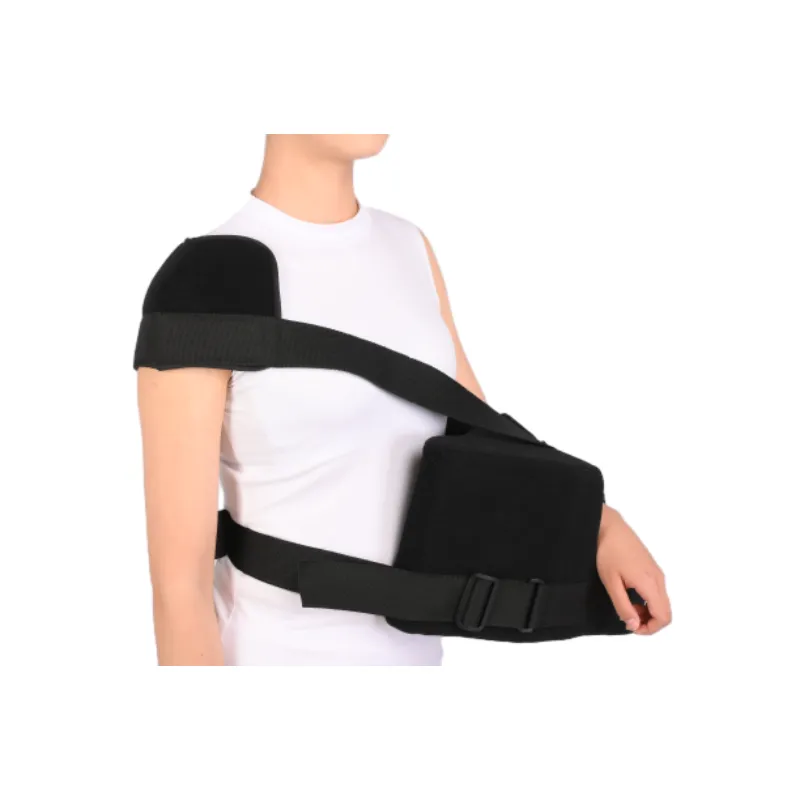
Market Leadership, Customization, and Collaborative Partnerships
In the competitive landscape of medical orthotics, leadership is established not only through superior product design but also through a commitment to innovation, customization capabilities, and strong industry partnerships. Our Humeral Abdution Othosis stands out as a premier abduction pillow brace due to its unparalleled blend of ergonomic design, advanced material science, and clinical effectiveness, which collectively ensure optimal patient outcomes and comfort. While various manufacturers offer similar products, our advantage lies in our deep understanding of orthopedic biomechanics and rehabilitation needs, translated into features that truly make a difference in patient compliance and recovery trajectories. We constantly benchmark our products against leading competitors, focusing on areas such as breathability, adjustability, durability, and ease of use, ensuring that our shoulder abduction brace with pillow consistently meets and exceeds industry standards. Our long-standing history of serving healthcare professionals, spanning over a decade, underscores our reliability and expertise in providing high-quality orthopedic solutions. We are proud to hold certifications such as ISO 9001 and ISO 13485, demonstrating our unwavering commitment to quality management systems that govern every aspect from design to distribution.
Beyond standardized offerings, we recognize that unique clinical scenarios or specific institutional requirements may necessitate tailored solutions. Therefore, we offer extensive customization options for our shoulder abduction sling with pillow range. This can include variations in pillow density or angle, custom sizing for bariatric or pediatric patients, specific material preferences for sensitive skin, or incorporating unique branding elements for large hospital networks or rehabilitation centers. Our dedicated engineering and design teams work closely with clients to develop bespoke solutions, leveraging our robust manufacturing capabilities to bring specialized concepts to fruition while maintaining cost-effectiveness and rapid prototyping. Furthermore, our collaborative partnerships with key opinion leaders in orthopedics, physical therapists, and academic institutions ensure that our product development remains at the forefront of clinical advancements. This direct feedback loop allows us to continuously refine and innovate, ensuring that our shoulder immobilizer with pillow and other orthopedic devices truly address the evolving needs of the medical community and the patients they serve, reinforcing our position as a trusted provider of advanced arm shoulder sling support solutions globally.
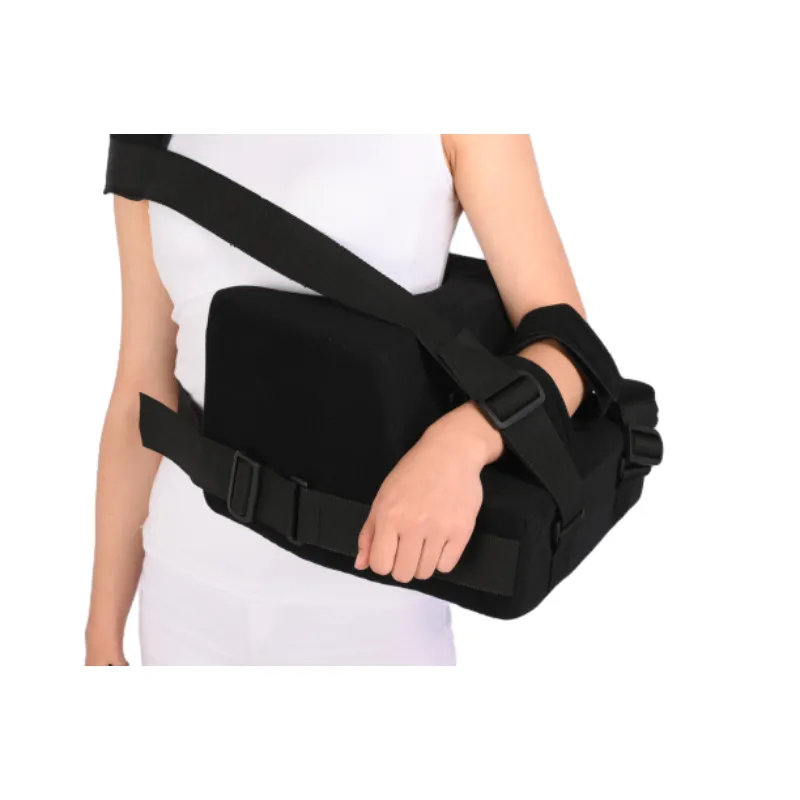
Frequently Asked Questions (FAQ)
Q1: How does an abduction pillow brace differ from a standard arm sling?
A standard arm sling primarily supports the arm and takes its weight off the shoulder, typically allowing the arm to hang against the body (adducted position). An abduction pillow brace, conversely, incorporates a wedge-shaped pillow that positions the arm away from the body at a specific angle (abduction), usually between 15 to 45 degrees. This abducted position is crucial for specific orthopedic conditions, particularly after rotator cuff repairs or shoulder instability surgeries, as it reduces tension on the healing tissues and prevents unwanted internal rotation, promoting optimal healing. The pillow component also helps to distribute weight more evenly, minimizing pressure points and enhancing patient comfort for prolonged wear. This specialized support is designed to provide a more stable and therapeutically advantageous environment for complex shoulder recoveries, distinguishing it significantly from basic slings that offer general support without precise angular control. The stability offered by the abduction pillow also helps in preventing accidental movements that could compromise surgical outcomes, thereby ensuring a more controlled and effective recovery process as prescribed by medical professionals.
Q2: What is the typical delivery timeframe for the Humeral Abdution Othosis?
Our commitment to efficient service ensures prompt delivery of the Humeral Abdution Othosis. For standard orders within major markets, the typical delivery cycle is approximately 3-5 business days from order confirmation. For bulk orders or customized solutions, a detailed production and shipping schedule will be provided at the time of quotation, usually ranging from 10-20 business days depending on complexity and quantity. We maintain robust inventory levels of our standard shoulder abduction brace with pillow to facilitate immediate dispatch for urgent requirements. Our logistics partners are selected for their reliability and speed, offering tracking services for all shipments, allowing our clients to monitor their order's progress in real-time. We also offer expedited shipping options for critical needs, the details of which can be discussed with our sales team. Our streamlined order fulfillment process is designed to support healthcare providers and distributors in meeting their urgent patient needs, ensuring that effective rehabilitation tools are available when and where they are required without unnecessary delays, reflecting our dedication to dependable service.
Q3: What kind of warranty and customer support are offered for the Humeral Abdution Othosis?
We stand behind the quality and durability of our Humeral Abdution Othosis. Each shoulder abduction sling with pillow comes with a comprehensive one-year limited warranty against manufacturing defects and material failures from the date of purchase. This warranty covers structural integrity and functional components under normal use, demonstrating our confidence in the product's craftsmanship and materials. Beyond the warranty period, our dedicated customer support team is available to assist with any product-related inquiries, troubleshooting, or replacement part needs. We offer multi-channel support including phone, email, and a dedicated online portal for quick access to product information, user guides, and FAQs. For complex technical queries or advanced customization discussions, our technical specialists and engineers are available for consultation. Our commitment to post-sales support ensures that healthcare professionals and patients alike receive timely assistance, maximizing the utility and longevity of the Humeral Abdution Othosis and providing peace of mind throughout the rehabilitation journey, affirming our commitment to client satisfaction and product reliability.
Commitment to Trust and Long-Term Partnership
Building trust in the B2B medical device sector is paramount, and at Jhorthopedic, our commitment to trust is woven into every aspect of our operations, from the rigorous design and manufacturing of each abduction pillow brace to our comprehensive after-sales support. Our long-standing presence in the orthopedic industry, combined with our adherence to international quality standards such as ISO 13485 and our FDA and CE registrations, provides a robust foundation of authority and reliability. We understand that medical professionals require not just high-quality products, but also reliable partners who can consistently deliver and support their clinical needs. Our transparent communication regarding product specifications, delivery timelines, and warranty policies ensures clarity and predictability, fostering strong, lasting relationships with hospitals, clinics, and distributors worldwide. We provide detailed technical documentation and clinical support resources, enabling healthcare providers to confidently integrate our Humeral Abdution Othosis into their patient care pathways. Our focus on continuous improvement, driven by feedback from the medical community, reinforces our dedication to evolving with the demands of modern orthopedics and rehabilitation.
Our client-centric approach extends beyond mere transactions; we aim to cultivate long-term partnerships built on mutual respect and shared goals of improving patient outcomes. This includes offering flexible ordering options, dedicated account management for large volume clients, and tailored training programs on the proper application and maintenance of our shoulder immobilizer with pillow. Our responsiveness to inquiries, efficient problem resolution, and proactive communication about product updates or enhancements underscore our commitment to being a dependable partner. Furthermore, our robust supply chain management ensures product availability and consistent quality, even in fluctuating market conditions. We believe that true partnership is demonstrated through unwavering support, consistent product excellence, and a shared vision for advancing patient care. The durability and effectiveness of our arm shoulder sling support devices, coupled with our steadfast support infrastructure, provide healthcare professionals with the confidence they need to choose Jhorthopedic as their preferred supplier for critical orthopedic solutions, ensuring that every patient receives the best possible care during their recovery journey.
References and Further Reading
- Smith, T.O., et al. "The effectiveness of abduction bracing following rotator cuff repair: a systematic review." Journal of Shoulder and Elbow Surgery, 2017.
- Frank, R.M., et al. "Postoperative Rehabilitation Following Rotator Cuff Repair: A Review of Current Practices." Orthopedic Clinics of North America, 2016.
- Neviaser, R.J., & Neviaser, T.J. The Shoulder: Principles and Practice. Lippincott Williams & Wilkins, 2013.
- American Academy of Orthopaedic Surgeons. "Rotator Cuff Tears." Accessed via official AAOS publications.
- The efficacy of external rotation and abduction bracing for anterior shoulder instability. Clinical Orthopaedics and Related Research, 2010.
This is the first article
-
Butterfly Brace for Broken Collar Bone Support & HealingNews Aug.18,2025
-
Wrist Splint for Sale: Pain Relief, Thumb & Hand SupportNews Aug.17,2025
-
Elastic Lumbar Support: Flexible Back Brace for Pain Relief & ComfortNews Aug.16,2025
-
Hard Cervical Collar - Hebei Jianhang Technology | Neck Support, Adjustable FitNews Aug.15,2025
-
Hard Cervical Collar - Hebei Jianhang|Neck Support, Comfort, DurabilityNews Aug.15,2025





















